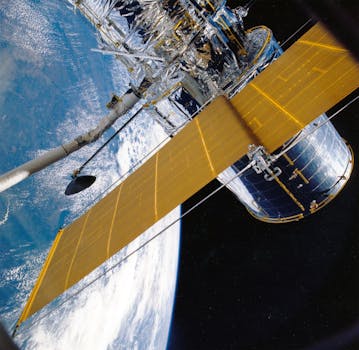LEO Satellites: Revolutionizing Global Connectivity with WordPress
Low Earth Orbit (LEO) satellites are transforming the way we communicate, and with WordPress, we can explore their impact on global connectivity.

LEO Satellites: Revolutionizing Global Connectivity with WordPress
LEO satellites, or Low Earth Orbit satellites, are revolutionizing the way we communicate. With their ability to provide high-speed, low-latency connectivity, they are transforming the way we live, work, and interact with each other. In this article, we will explore the world of LEO satellites and their impact on global connectivity, with a focus on WordPress.
WordPress, the popular content management system, is playing a significant role in the development and deployment of LEO satellite technology. With its flexibility, scalability, and ease of use, WordPress is the perfect platform for building and managing LEO satellite-related websites, applications, and services.
What are LEO Satellites?
LEO satellites are a type of satellite that orbits the Earth at an altitude of around 160 to 2,000 kilometers. They are much closer to the Earth than traditional geostationary satellites, which orbit at an altitude of around 36,000 kilometers. This proximity to the Earth allows LEO satellites to provide faster and more reliable connectivity, with lower latency and higher throughput.
LEO satellites are being used for a variety of applications, including satellite communications, Earth observation, and navigation. They are also being used to provide internet connectivity to remote and underserved communities, where traditional internet infrastructure is lacking.
How do LEO Satellites Work?
LEO satellites work by using a network of satellites in low Earth orbit to provide connectivity to users on the ground. The satellites communicate with each other and with ground stations, using a combination of radio frequency (RF) and optical signals. The satellites then relay the signals to and from the users, providing high-speed, low-latency connectivity.
The LEO satellite constellation is made up of many small satellites, each weighing around 100-500 kilograms. These satellites are launched into orbit using a variety of launch vehicles, including rockets and spacecraft. Once in orbit, the satellites are deployed and begin communicating with each other and with ground stations.
Benefits of LEO Satellites
LEO satellites offer a number of benefits, including high-speed, low-latency connectivity, global coverage, and low cost. They are also more resistant to interference and jamming than traditional satellites, making them more secure and reliable.
LEO satellites are also being used to provide connectivity to the Internet of Things (IoT), which is the network of physical devices, vehicles, and other items that are embedded with sensors, software, and connectivity. The IoT is expected to revolutionize the way we live and work, and LEO satellites are playing a key role in making it happen.
Challenges and Limitations of LEO Satellites
While LEO satellites offer many benefits, they also face a number of challenges and limitations. One of the biggest challenges is the high cost of launching and maintaining a large constellation of satellites. The satellites also require a lot of power to operate, which can be a challenge in terms of energy efficiency and sustainability.
Another challenge is the issue of space debris, which is the accumulation of junk and debris in Earth’s orbit. LEO satellites are contributing to the problem of space debris, and it is essential to develop sustainable and responsible practices for launching and operating satellites.
Conclusion
LEO satellites are revolutionizing the way we communicate and connect with each other. With their high-speed, low-latency connectivity, global coverage, and low cost, they are transforming the way we live, work, and interact with each other. WordPress is playing a significant role in the development and deployment of LEO satellite technology, and it is essential to continue innovating and improving the technology to meet the growing demands of global connectivity.







